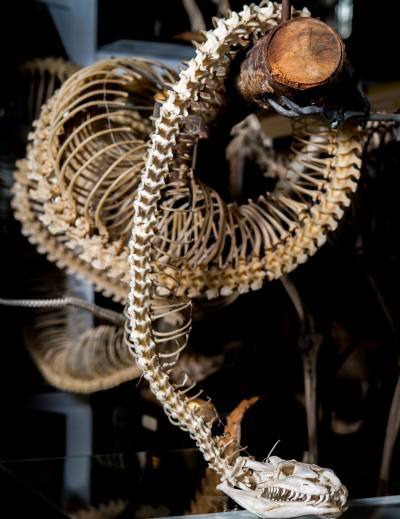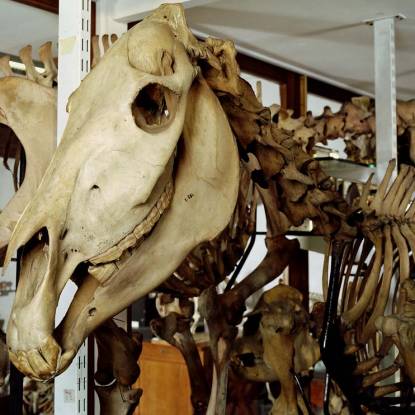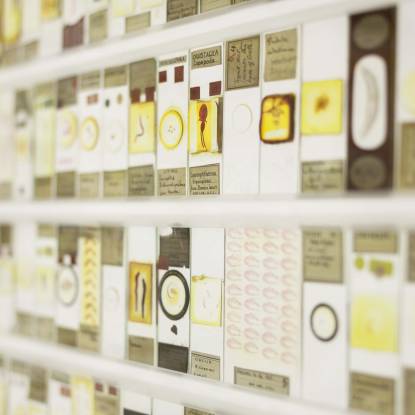African Rock Python Skeleton
This specimen was previously identified as an anaconda. See below for more information.

The specimen is from an African rock python Python sebae. Adults grow up to 6m in length, placing it in the top five longest snakes in the world, and the largest in Africa.
The brown and black patterning on the body camouflages it in its natural habitat, allowing it to stalk and ambush prey.
When is an anaconda, not an anaconda?
Pythons are not venomous but instead hunt by wrapping its muscular body around its prey causing suffocation.
To date, this specimen was documented in the collection as a green anaconda.

After visiting this page a member of the public got in touch to suggest that from these photos the snake in question looks like an African rock python (Python sebae) and not like an anaconda at all. Anacondas have a spotted pattern along their backs, the pattern in this specimen especially the head make it almost a certainty that this snake is an African rock python.
Following this query, the curator managed to contact some of the technicians in the photographs who maintain that they were told by London Zoo that it was an anaconda and until now this was never questioned. London Zoo have been contacted to see if records exist there as to the true identity of this iconic specimen.
 Close
Close




